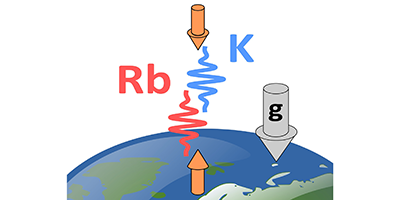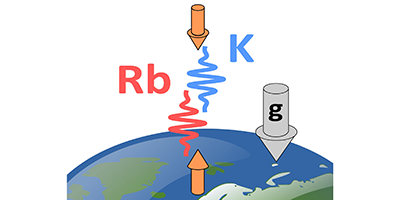Free Falling Matter Waves
Objects of different masses—such as feathers and bowling balls—should fall at the same rate in the absence of friction forces. However, some quantum gravity theories predict that gravitational acceleration may depend on an object’s properties, like its atomic makeup. A new experiment, described in Physical Review Letters, looks for such an effect by comparing for the first time the free-fall accelerations of different atomic elements in the same matter-wave interferometer. The results confirm the universality of free fall and may constrain alternative gravity models.
Many experiments over the years have tested free fall with lunar laser ranging and torsion balances. More recently, physicists have used matter-wave interferometry to measure gravitational acceleration of quantum particles. Although not yet as precise as macroscopic tests, interferometer experiments offer the possibility to directly test how gravity depends on quantum properties such as atomic spin.
Previous matter-wave interferometer tests have compared the free fall of two isotopes of the same atomic species. However, the isotopes are not different enough in their nuclear composition to evaluate certain gravitational models. To improve sensitivity, Ernst Rasel of the Leibniz University Hannover, Germany, and his colleagues have now compared different atomic species. They cooled rubidium and potassium atoms to microkelvin temperatures in a magneto-optical trap. When released, the atoms fell along two separate paths determined by laser pulses that acted like atom beam splitters and mirrors. When the paths recombined, the team observed an interference signal, from which they could derive the gravitational acceleration. The rubidium and potassium accelerations were the same to within about part in million. With further improvements, their sensitivity might reach the level of parts per billion. – Michael Schirber





